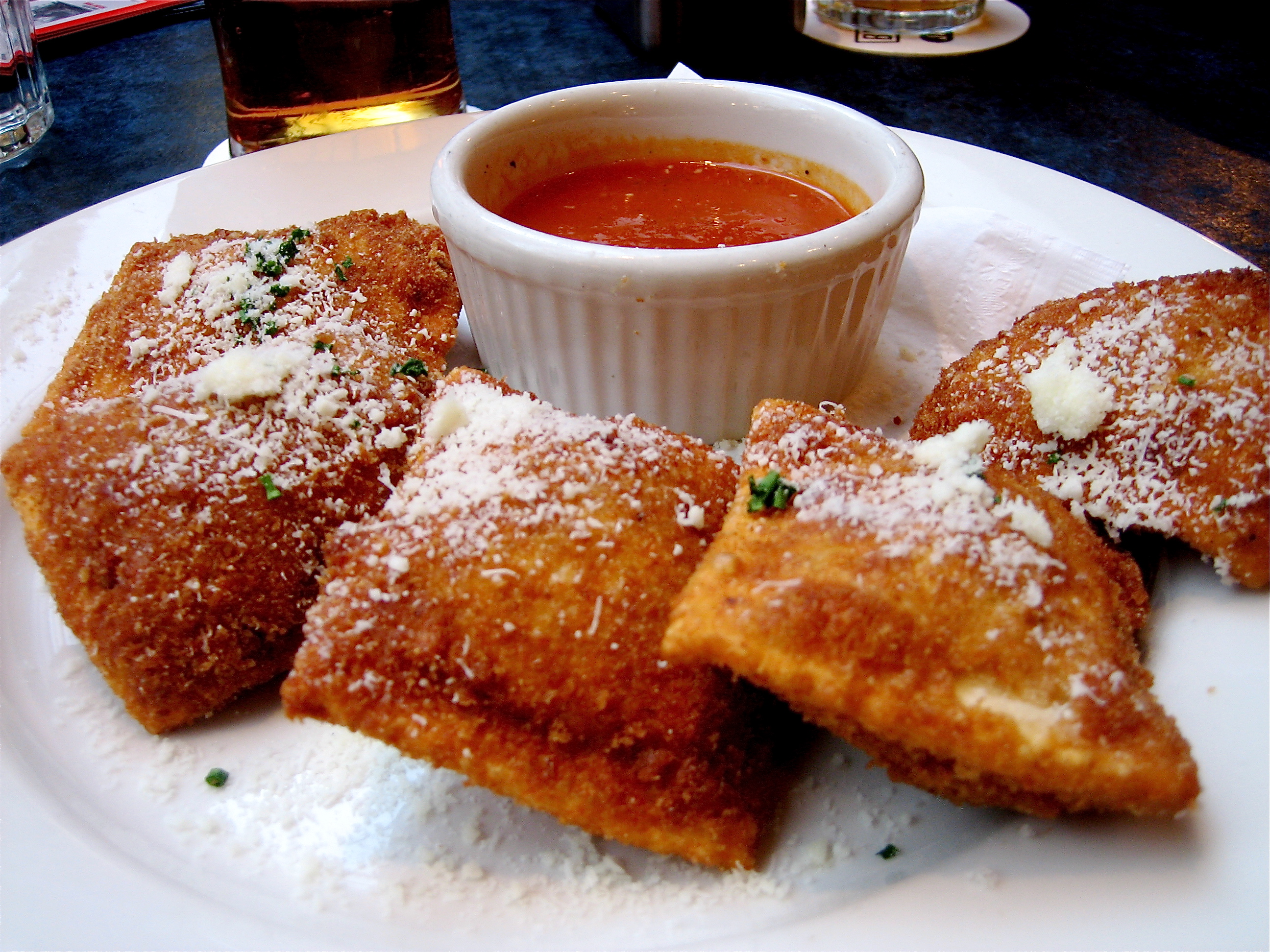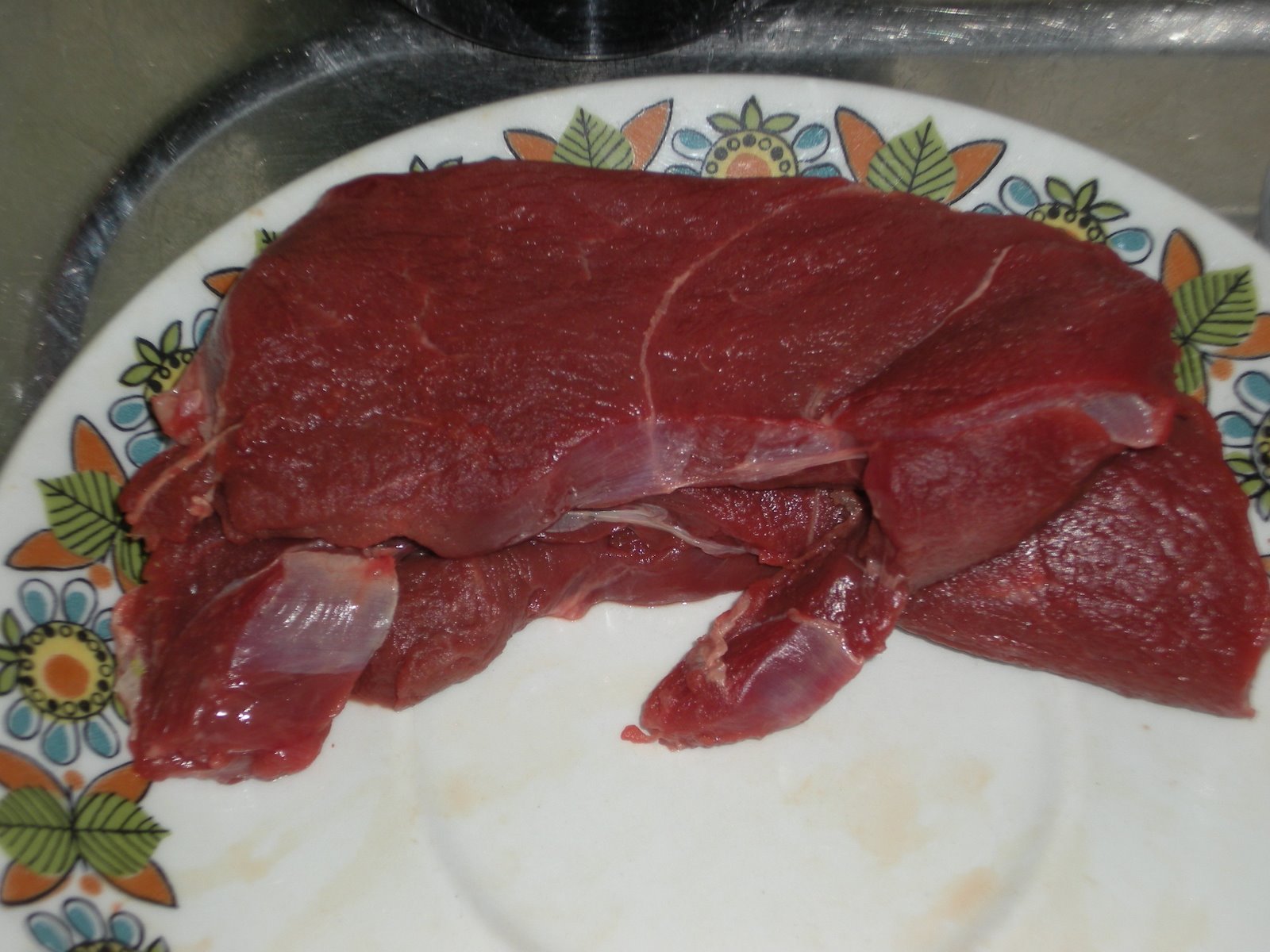|
Pelmeni
Pelmeni (russian: пельмени—plural, ; pelmen, russian: пельмень, link=no—singular, ) are dumplings of Russian cuisine that consist of a filling wrapped in thin, unleavened dough. It is debated whether they originated in Ural or Siberia. Pelmeni have been described as "the heart of Russian cuisine". Ingredients The dough is made from flour and water, sometimes adding a small portion of eggs. The filling can be minced meat (pork, lamb, beef, fish or any other kind of meat, venison being particularly traditional for colder regions) or mushrooms, or a combination of the two. The mixing together of different kinds of meat is also popular. The traditional Udmurt recipe requires a mixture of 45% beef, 35% mutton, and 20% pork. Various spices, such as black pepper and diced onions as well as garlic, are mixed into the filling. They are commonly topped with sour cream, mayonnaise, dill, red onions or vinegar, all of which are traditional to the region and can be pr ... [...More Info...] [...Related Items...] OR: [Wikipedia] [Google] [Baidu] |
Russian Cuisine
Russian cuisine is a collection of the different dishes and cooking traditions of the Russian people as well as a list of culinary products popular in Russia, with most names being known since pre-Soviet times, coming from all kinds of social circles. History The history of Russian cuisine was divided in four groups: Old Russian cuisine (ninth to sixteenth century), Old Moscow cuisine (seventeenth century), the cuisine that existed during the ruling of Peter and Catherine the Great (eighteenth century), and finally Petersburg cuisine, which took place from the end of the eighteenth century to the 1860s. In the Old Russian period, the main food groups were bread, lots of grains, and lots of foods that contained starch. Women baked pies with lots of different fillings, such as mushrooms or berries. During gatherings, a loaf of bread and salt was always present. Kasha, such as buckwheat, oats, etc.were represented as wellbeing to the household. Lots of Russians used honey and ... [...More Info...] [...Related Items...] OR: [Wikipedia] [Google] [Baidu] |
Dumpling
Dumpling is a broad class of dishes that consist of pieces of dough (made from a variety of starch sources), oftentimes wrapped around a filling. The dough can be based on bread, flour, buckwheat or potatoes, and may be filled with meat, fish, tofu, cheese, vegetables, fruits or sweets. Dumplings may be prepared using a variety of methods, including baking, boiling, frying, simmering or steaming and are found in many world cuisines. In the United States in May 2015 National Day Calendar listed National Dumpling Day as held on September 26, annually. African Banku and kenkey are defined as dumplings in that they are starchy balls of dough that are steamed. They are formed from fermented cornmeal. Banku is boiled and requires continuous kneading, while kenkey is partly boiled then finished by steaming in corn or banana leaves. Tihlo—prepared from roasted barley flour—originated in the Tigray region of Ethiopia and is now very popular in Amhara as well and spreading ... [...More Info...] [...Related Items...] OR: [Wikipedia] [Google] [Baidu] |
Dumpling
Dumpling is a broad class of dishes that consist of pieces of dough (made from a variety of starch sources), oftentimes wrapped around a filling. The dough can be based on bread, flour, buckwheat or potatoes, and may be filled with meat, fish, tofu, cheese, vegetables, fruits or sweets. Dumplings may be prepared using a variety of methods, including baking, boiling, frying, simmering or steaming and are found in many world cuisines. In the United States in May 2015 National Day Calendar listed National Dumpling Day as held on September 26, annually. African Banku and kenkey are defined as dumplings in that they are starchy balls of dough that are steamed. They are formed from fermented cornmeal. Banku is boiled and requires continuous kneading, while kenkey is partly boiled then finished by steaming in corn or banana leaves. Tihlo—prepared from roasted barley flour—originated in the Tigray region of Ethiopia and is now very popular in Amhara as well and spreading ... [...More Info...] [...Related Items...] OR: [Wikipedia] [Google] [Baidu] |
Smetana (dairy Product)
Smetana (or ''smotana'') is a type of sour cream from Central Europe, Central and Eastern Europe. It is a dairy product produced by souring heavy cream. It is similar to ''crème fraîche'' (28% fat), but nowadays mainly sold with 9% to 42% milkfat content depending on the country. Its cooking properties are different from ''crème fraîche'' and the lighter sour creams sold in the US, which contain 12 to 16% butterfat. It is widely used in cooking and baking. Uses and distribution Smetana is also used in other central Central and Eastern European cuisines in appetizers, main courses, soups and desserts. For example, it may be blended with soups, vegetable salads, cole slaw, and meat dishes. It is served with dumplings (''pelmeni'', ''pierogi'', ''varenyky''), or with pancakes (''bliny'', ''palacsinta'', ''naleśniki'', ''oladyi'', ''syrniki''). It is also used as a filling in savoury pancakes. Smetana can be blended to a Liptauer-like cheese spread with quark (dairy product), qu ... [...More Info...] [...Related Items...] OR: [Wikipedia] [Google] [Baidu] |
Komi Language
The Komi language ( kv, коми кыв, ''komi kyv''), also known as Zyryan, Zyrian or Komi-Zyryan (Komi: коми-зырян кыв, komi-zyrjan kyv),Komi language ''Britannica''. is one of the two regional varieties of the Komi language, the other regional variety being Permyak. Komi is natively spoken by the native to the |
Horseradish
Horseradish (''Armoracia rusticana'', syn. ''Cochlearia armoracia'') is a perennial plant of the family Brassicaceae (which also includes mustard, wasabi, broccoli, cabbage, and radish). It is a root vegetable, cultivated and used worldwide as a spice and as a condiment. The species is probably native to southeastern Europe and western Asia. Description Horseradish grows up to tall, with hairless bright green unlobed leaves up to long that may be mistaken for docks ('' Rumex''). It is cultivated primarily for its large, white, tapered root. The white four-petalled flowers are scented and are borne in dense panicles. Established plants may form extensive patches and may become invasive unless carefully managed. Intact horseradish root has little aroma. When cut or grated, enzymes from within the plant cells digest sinigrin (a glucosinolate) to produce allyl isothiocyanate (mustard oil), which irritates the mucous membranes of the sinuses and eyes. Once exposed to air or ... [...More Info...] [...Related Items...] OR: [Wikipedia] [Google] [Baidu] |
Tomato
The tomato is the edible berry of the plant ''Solanum lycopersicum'', commonly known as the tomato plant. The species originated in western South America, Mexico, and Central America. The Mexican Nahuatl word gave rise to the Spanish word , from which the English word ''tomato'' derived. Its domestication and use as a cultivated food may have originated with the indigenous peoples of Mexico. The Aztecs used tomatoes in their cooking at the time of the Spanish conquest of the Aztec Empire, and after the Spanish encountered the tomato for the first time after their contact with the Aztecs, they brought the plant to Europe, in a widespread transfer of plants known as the Columbian exchange. From there, the tomato was introduced to other parts of the European-colonized world during the 16th century. Tomatoes are a significant source of umami flavor. They are consumed in diverse ways: raw or cooked, and in many dishes, sauces, salads, and drinks. While tomatoes are fruits� ... [...More Info...] [...Related Items...] OR: [Wikipedia] [Google] [Baidu] |
Cabbage
Cabbage, comprising several cultivars of ''Brassica oleracea'', is a leafy green, red (purple), or white (pale green) biennial plant grown as an annual vegetable crop for its dense-leaved heads. It is descended from the wild cabbage ( ''B. oleracea'' var. ''oleracea''), and belongs to the "cole crops" or brassicas, meaning it is closely related to broccoli and cauliflower (var. ''botrytis''); Brussels sprouts (var. ''gemmifera''); and Savoy cabbage (var. ''sabauda''). A cabbage generally weighs between . Smooth-leafed, firm-headed green cabbages are the most common, with smooth-leafed purple cabbages and crinkle-leafed savoy cabbages of both colours being rarer. Under conditions of long sunny days, such as those found at high northern latitudes in summer, cabbages can grow quite large. , the heaviest cabbage was . Cabbage heads are generally picked during the first year of the plant's life cycle, but plants intended for seed are allowed to grow a second year and must be ... [...More Info...] [...Related Items...] OR: [Wikipedia] [Google] [Baidu] |
Venison
Venison originally meant the meat of a game animal but now refers primarily to the meat of antlered ungulates such as elk or deer (or antelope in South Africa). Venison can be used to refer to any part of the animal, so long as it is edible, including the internal organs. Venison, much like beef or pork, is categorized into specific cuts, including roast, sirloin, and ribs. Etymology The word derives from the Latin ''venari'', meaning "to hunt or pursue". This term entered the English language through Norman French ''venaison'' in the 11th century, following the Norman conquest of England and the establishment of Royal Forests. Definition ''Venison'' originally described meat of any game animal killed by hunting and was applied to any animal from the families ''Cervidae'' (true deer), ''Leporidae'' (rabbits and hares), ''Suidae'' (wild boar) and certain species of the genus ''Capra'' (goats and ibex). In southern Africa, the word ''venison'' refers to the meat of antelope, a ... [...More Info...] [...Related Items...] OR: [Wikipedia] [Google] [Baidu] |
Red Onions
Red onions (also known as purple or blue onions in some mainland European countries, though not the UK) are cultivars of the onion (''Allium cepa''), and have purplish-red skin and white flesh tinged with red. They are most commonly used in cooking, but the skin has also been used as a dye. Red onions tend to be medium to large in size and have a sweeter flavor than white or yellow onions due to low levels of pyruvic acid and sulfur compounds. They are often consumed raw (and can be added to salads for color and bite), grilled, or lightly cooked with other foods. Red onions are available throughout the year and are high in flavonoids and fiber (compared to white and yellow onions).Bill Jones Cut red onion can be soaked in cool water for a period of time, and the water can be drained off, resulting in less "bite" and pungency. Varieties Tropea The red onion from Tropea, Italy, (Italian: "Cipolla Rossa di Tropea") grows in a small area of Calabria in southern Italy, Capo ... [...More Info...] [...Related Items...] OR: [Wikipedia] [Google] [Baidu] |
Dill
Dill (''Anethum graveolens'') is an annual herb in the celery family Apiaceae. It is the only species in the genus ''Anethum''. Dill is grown widely in Eurasia, where its leaves and seeds are used as a herb or spice for flavouring food. Growth Dill grows up to , with slender hollow stems and alternate, finely divided, softly delicate leaves long. The ultimate leaf divisions are broad, slightly broader than the similar leaves of fennel, which are threadlike, less than broad, but harder in texture. The flowers are white to yellow, in small umbels diameter. The seeds are long and thick, and straight to slightly curved with a longitudinally ridged surface. Etymology The word ''dill'' and its close relatives are found in most of the Germanic languages; its ultimate origin is unknown. The generic name ''Anethum'' is the Latin form of Greek ἄνῑσον / ἄνησον / ἄνηθον / ἄνητον, which meant both 'dill' and 'anise'. The form ''anīsum'' came to be used fo ... [...More Info...] [...Related Items...] OR: [Wikipedia] [Google] [Baidu] |
Mayonnaise
Mayonnaise (; ), colloquially referred to as "mayo" , is a thick, cold, and creamy sauce or dressing commonly used on sandwiches, hamburgers, composed salads, and French fries. It also forms the base for various other sauces, such as tartar sauce, fry sauce, remoulade, salsa golf, and rouille. Mayonnaise is an emulsion of oil, egg yolk, and an acid, either vinegar or lemon juice; there are many variants using additional flavorings. The color varies from near-white to pale yellow, and its texture from a light cream to a thick gel. Commercial eggless imitations are made for those who avoid chicken eggs because of egg allergies, to limit dietary cholesterol, or because they are vegans. History ''Mayonnaise'' is a French cuisine appellation that seems to have appeared for the first time in 1806. The hypotheses invoked over time as to the origin(s) of mayonnaise have been numerous and contradictory. Most hypotheses do however agree on the geographical origin of the sauce ... [...More Info...] [...Related Items...] OR: [Wikipedia] [Google] [Baidu] |










.jpg)
